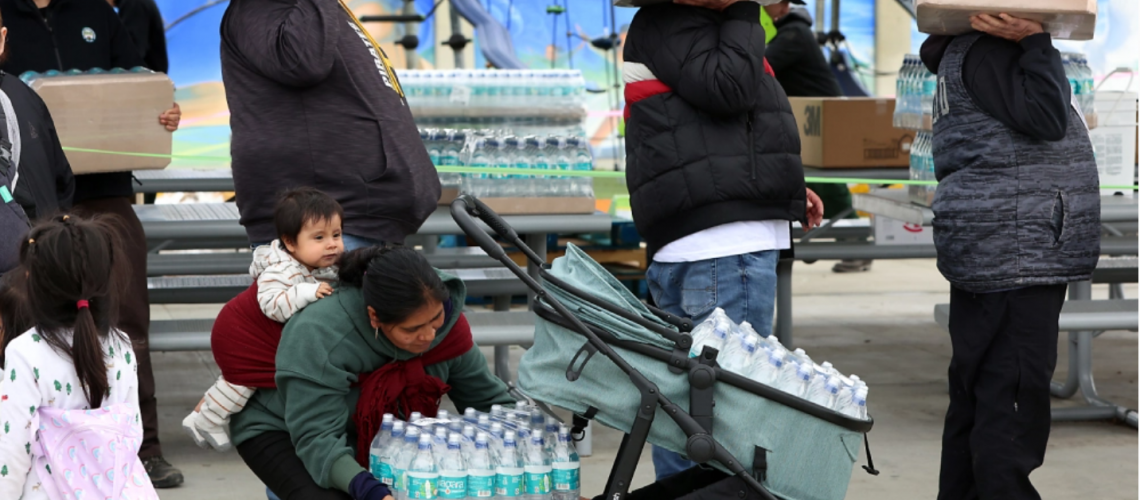(Celia Ramirez loads up her stroller as she and other Pajaro residents get water and other emergency supplies at a distribution center at Pajaro Park on Thursday. (Shmuel Thaler – Santa Cruz Sentinel)
Hello Everyone, my name is Lizet Lomeli, and I am currently a senior at California State University Monterey Bay, majoring with a B.A. in Collaborative Human and Health Services. This is my second semester working as an NPC intern.
After reading the “Pajaro Floods: Community Groups Step Up” Guest Commentary published by the Santa Cruz Sentinel and witnessing, first hand, all the damages the floods caused, the article clearly highlights the importance of collaboration during a disaster, CLICK TO READ THE FULL ARTICLE HERE. This blog focuses on the impacts of the floods that affected and displaced many residents and business owners in the Pajaro community without receiving federal aid for weeks. The people affected by the floods are primarily immigrants, low-income, and those who work in the fields. The homes in Pajaro were affected, but so were strawberry fields near the breached levee, and many people’s vehicles flooded. With the road closures north and southbound of Highway 1 and needing access to Pajaro made it nearly impossible for those trying to get to Watsonville or Santa Cruz. The only way through was Highway 129, which took a few hours to get to Watsonville, forcing many people to miss work and students living in surrounding areas to miss school.
The piles of hazardous trash and mud outside people’s homes were disheartening. It took weeks before being completely removed from the community of Pajaro. It became a public health concern – after noticing that the mountains of hazardous trash were only getting bigger each day I drove by and no one seemed to be doing anything. People were seen shoveling mud from their homes without proper protective gear, no masks, or gloves, or anyone wearing proper boots. This article highlights the three different phases of recovery. Phase 1 – focusing on providing aid immediately after disaster for the first month. Phase 2 (current phase) – assessing medical, mobility, mental health, job, and home damage for approximately 4 months after the first phase. Phase 3 – the long-term recovery phase and will likely take years to recover.
This Guest Commentary was co-authored by Ray Cancino, Community Bridges; MariaElena De La Garza, Community Action Board of Santa Cruz County; Angela Di Novella, Catholic Charities Diocese of Monterey; Kalyne Foster Renda, Monarch Services; Jasmine Nájera, Pajaro Valley Prevention and Student Assistance, Inc; Dan Baldwin, Community Foundation for Monterey County, and Susan True, Community Foundation Santa Cruz County.
